Before we talked about the split into science and arts editions, you had also discussed what should be carried over from past Brain Training games.
Right. In the previous Brain Training games, four players could save their profile, and everyone could later on enjoy exhibiting their pictures together to compare them.
Brain Training wasn't just for basic training, but also included a number of methods for people who shared one DS to better communicate with each other. Showing pictures together was one of those methods.
Right. Dr. Kawashima has written a lot in his books about how communication can stimulate brain activity, so we decided to add a communicative element. As a side note, Animal Crossing gave us a hint as to how to do that.
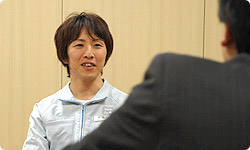
In Animal Crossing, sometimes when you write a letter to an animal, that animal will later show it to another player and say something like, "Look what he wrote!” We decided to do something like that for Brain Training.
I see. The letters in Animal Crossing developed into the picture-drawing quizzes and word activities of Brain Training.
We got a lot of ideas from Animal Crossing. For example, sometimes the animals say hello and tell you how many days it's been since you met. We lifted that whole idea and used it.
Wow. I didn't know that came from Animal Crossing.
It's almost like I made Brain Training while looking at Animal Crossing! (laughs)
Going back to the saved profiles, this time the theme is "My DS” - players making their Nintendo DSi specific to themselves. So one might naturally think that there would only be space for one profile, but if you did that, the fun of communicating that is present in the previous games would be lost. So we came up with a guest mode5.
5Guest mode: This is designated the "Family or Friend” mode in the game.
Wii Fit has something similar. It allows visitors to try out playing the game.
Usually a guest's data wouldn't be saved, but this time it can be. For example, the guest's Brain Age, drawings, photos and voice can all be saved.
In others words, what you might want to compare with someone.
Exactly.
So in addition to the My DS concept of one person, one DS, you also included features that make possible the type of communication that was part of the appeal of Brain Training.
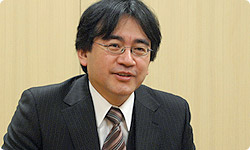
We pursued both ideas - communication and one DS per person - and the result was a savable guest mode.
Next, I'd like to ask you about the new games that have been added. Which ones do you like, Takahashi-san?
One is an extremely simple exercise about recognizing photos.
What's it like?
First a photo appears on the left side of the screen, and you have to remember it. Then it disappears and six photos appear on the right-hand side of the screen. Next the game asks you which of the photos is the one you saw earlier. That's all. It's very simple.

It really is simple, but then the difficulty increases. When I was asked which photo I had seen two photos ago, I had no idea at all!
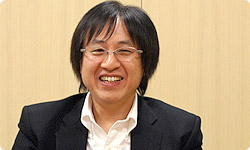
Only two photos before?
I was shocked at how I couldn't remember. (laughs) But it seems a lot of people are that way.
At first a lot of people are surprised at how they can't do it. Of course, if you keep training, you'll gradually improve.
Another fun one is kanji shooting.
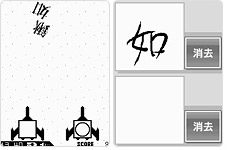
For Kanji Invasion you have to write the kanji characters that appear. (Kanji Invasion will only be available in the Japanese version of A Little Bit of Brain Training).
Kanji enemies appear, and you have to write those kanji. It's like a shooting game, but with pictures and sound as weapons. I've always been the kind of person who loves video games, so I couldn't help but put it in. (laughs)
Did it stimulate your brain?
Yes. Originally I was creating a kanji game aside from Brain Training, but I decided to throw it in. (laughs)
But if you get the strokes out of order, you can't beat the enemy kanji. That's because I'm no good at stroke order!
That's why it may be good for helping you study standard stroke order. The Arts Edition uses kanji, but the Maths Edition uses numbers. There's an exercise in which numbers become the enemy. The images and sounds are a lot like those of a fighting game.
Did your gamer instincts take over while you were making it?
Yeah. (laughs) For example, if the numbers 2 and 9 appear, you have to write the total of 11. The whole atmosphere is sort of based around retro games, but I think it's just what some people are nostalgic for.
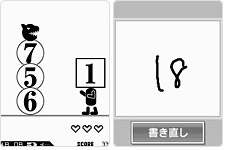
For Addition Buster and Battle you have to add the enemy numbers that appear.
And then there are the ones for those whose Brain Age has reached 20.
Oh, right. I was just chatting with Dr. Kawashima one day, and when I told him that with past versions of Brain Training some people have quit playing once their Brain Age reached 20, he got really disappointed.
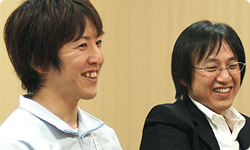
Dr. Kawashima got disappointed? (laughs)
So this time, when your Brain Age reaches 20, someone with a unique appearance comes out.
Someone with a unique appearance? (laughs)
And he offers very strict instruction.
He gives the player harder tasks.
So there's a reason for people who have reached 20 to keep challenging themselves.
But first you've got to attain a Brain Age of 20. So is 20 the end?
Well...the unique person might assign you something additional, like a rank.
Having been split into two new games, it isn't Chotto at all! (laughs)
The play time for each session is short, but in its own way the game is packed full! (laughs)
Kawamoto-san, does A Little Bit of Brain Training feel like the third game in the series to you?
It doesn't really feel like Brain Training 3. It's more like we gathered Brain Training into a form fit to download onto your Nintendo DSi and walk around with. I hope people who haven't played Brain Training before this will use A Little Bit of Brain Training as an occasion to give it a try.
Some people might think that, given the huge sales of the Brain Training series, there can't possibly be anyone out there who hasn't played it, but that's not true at all. Compared to the number of consoles sold, the amount of software sold doesn’t even come close.
After this game goes on sale and people learn the meaning of Chotto, I hope people who haven't yet had the chance to try Brain Training, as well as busy people who haven't played for a while, will once again enjoy training their brain!
Thank you very much, both of you.
You're welcome.